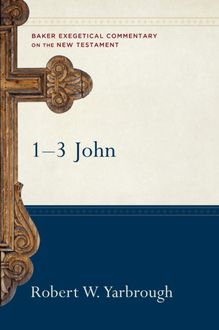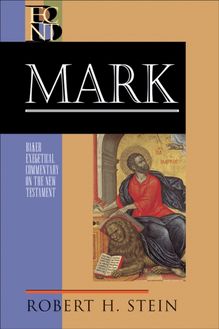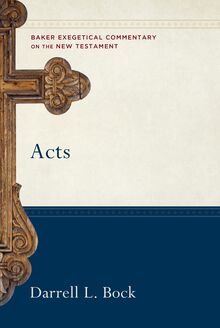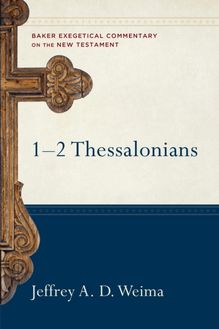-
 Univers
Univers
-
 Ebooks
Ebooks
-
 Livres audio
Livres audio
-
 Presse
Presse
-
 Podcasts
Podcasts
-
 BD
BD
-
 Documents
Documents
-
- Cours
- Révisions
- Ressources pédagogiques
- Sciences de l’éducation
- Manuels scolaires
- Langues
- Travaux de classe
- Annales de BEP
- Etudes supérieures
- Maternelle et primaire
- Fiches de lecture
- Orientation scolaire
- Méthodologie
- Corrigés de devoir
- Annales d’examens et concours
- Annales du bac
- Annales du brevet
- Rapports de stage
La lecture à portée de main
Vous pourrez modifier la taille du texte de cet ouvrage
Découvre YouScribe en t'inscrivant gratuitement
Je m'inscrisRomans (Baker Exegetical Commentary on the New Testament) , livre ebook
Découvre YouScribe en t'inscrivant gratuitement
Je m'inscrisEn savoir plus
Vous pourrez modifier la taille du texte de cet ouvrage
En savoir plus

Description
Sujets
Informations
| Publié par | Baker Publishing Group |
| Date de parution | 16 octobre 2018 |
| Nombre de lectures | 0 |
| EAN13 | 9781493414383 |
| Langue | English |
| Poids de l'ouvrage | 4 Mo |
Informations légales : prix de location à la page 0,1560€. Cette information est donnée uniquement à titre indicatif conformément à la législation en vigueur.
Extrait
Series Page
BAKER EXEGETICAL COMMENTARY ON THE NEW TESTAMENT
ROBERT W. YARBROUGH and JOSHUA W. JIPP, EDITORS
Volumes now available:
Matthew David L. Turner
Mark Robert H. Stein
Luke Darrell L. Bock
Acts Darrell L. Bock
Romans, 2nd ed. Thomas R. Schreiner
1 Corinthians David E. Garland
2 Corinthians George H. Guthrie
Galatians Douglas J. Moo
Ephesians Frank Thielman
Philippians Moisés Silva
Colossians and Philemon G. K. Beale
1–2 Thessalonians Jeffrey A. D. Weima
James Dan G. McCartney
1 Peter Karen H. Jobes
1–3 John Robert W. Yarbrough
Jude and 2 Peter Gene L. Green
Revelation Grant R. Osborne
***
Thomas R. Schreiner (PhD, Fuller Theological Seminary) is James Buchanan Harrison Professor of New Testament Interpretation and professor of biblical theology at The Southern Baptist Theological Seminary in Louisville, Kentucky. He is the author of The Law and Its Fulfillment ; Paul, Apostle of God’s Glory in Christ ; New Testament Theology ; The King in His Beauty ; and commentaries on Galatians, Hebrews, and 1–2 Peter and Jude.
Title Page
Copyright Page
© 1998, 2018 by Thomas R. Schreiner
Published by Baker Academic
a division of Baker Publishing Group
P.O. Box 6287, Grand Rapids, MI 49516-6287
www.bakeracademic.com
Ebook edition created 2018
Ebook corrections 11.05.2021
All rights reserved. No part of this publication may be reproduced, stored in a retrieval system, or transmitted in any form or by any means—for example, electronic, photocopy, recording—without the prior written permission of the publisher. The only exception is brief quotations in printed reviews.
Library of Congress Cataloging-in-Publication Data is on file at the Library of Congress, Washington, DC.
ISBN 978-1-4934-1438-3
Unless otherwise indicated, all Scripture quotations are the author’s translation.
Dedication
To John Piper, who has proclaimed to me the supremacy of God
Contents
Cover i
Series Page ii
Title Page iii
Copyright Page iv
Dedication v
Series Preface ix
Author’s Preface to the Second Edition xi
Author’s Preface to the First Edition xiii
Abbreviations xv
Transliteration xx
Map xxii
Introduction to Romans 1
I. The Gospel as the Revelation of God’s Righteousness (1:1–17) 33
A. Salutation: The Gospel concerning God’s Son (1:1–7) 35
B. Thanksgiving: Prayer for an Apostolic Visit (1:8–15) 52
C. Theme: The Gospel of God’s Righteousness (1:16–17) 62
II. God’s Righteousness in His Wrath against Sinners (1:18–3:20) 83
A. The Unrighteousness of Gentiles (1:18–32) 87
B. The Unrighteousness of Jews (2:1–3:8) 111
C. The Unrighteousness of All People (3:9–20) 168
III. The Saving Righteousness of God (3:21–4:25) 184
A. God’s Righteousness in the Death of Jesus (3:21–26) 186
B. Righteousness by Faith for Jews and Gentiles (3:27–31) 209
C. Abraham as the Father of Jews and Gentiles (4:1–25) 217
IV. Hope as a Result of Righteousness by Faith (5:1–8:39) 253
A. Assurance of Hope (5:1–11) 258
B. Hope in Christ’s Triumph over Adam’s Sin (5:12–21) 274
C. The Triumph of Grace over the Power of Sin (6:1–23) 302
D. The Triumph of Grace over the Power of the Law (7:1–8:17) 341
E. Assurance of Hope (8:18–39) 422
V. God’s Righteousness to Israel and the Gentiles (9:1–11:36) 460
A. God’s Saving Promise to Israel (9:1–29) 466
B. Israel’s Rejection of God’s Saving Righteousness (9:30–11:10) 519
C. God’s Righteousness in His Plan for Jews and Gentiles (11:11–32) 575
D. Concluding Doxology (11:33–36) 614
VI. God’s Righteousness in Everyday Life (12:1–15:13) 621
A. Paradigm for Exhortations: Total Dedication to God (12:1–2) 624
B. Marks of the Christian Community (12:3–13:14) 631
C. A Call for Mutual Acceptance between the Strong and the Weak (14:1–15:13) 683
VII. The Extension of God’s Righteousness through the Pauline Mission (15:14–16:23) 735
A. The Establishment of Churches among the Gentiles (15:14–33) 737
B. Coworkers in the Gospel (16:1–23) 758
VIII. Final Summary of the Gospel of God’s Righteousness (16:25–27) 784
Works Cited 791
Index of Subjects 867
Index of Authors 872
Index of Greek Words 890
Index of Scripture and Other Ancient Writings 893
Back Cover 919
Series Preface
The chief concern of the Baker Exegetical Commentary on the New Testament (BECNT) is to provide, within the framework of informed evangelical thought, commentaries that blend scholarly depth with readability, exegetical detail with sensitivity to the whole, and attention to critical problems with theological awareness. We hope thereby to attract the interest of a fairly wide audience, from the scholar who is looking for a thoughtful and balanced examination of the text to the motivated lay Christian who craves a solid but accessible exposition.
Nevertheless, a major purpose is to address the needs of pastors and others involved in the preaching and exposition of the Scriptures as the uniquely inspired Word of God. This consideration directly affects the parameters of the series. For example, serious biblical expositors cannot afford to depend on a superficial treatment that avoids the difficult questions, but neither are they interested in encyclopedic commentaries that seek to cover every conceivable issue that could be raised. Our aim, therefore, is to focus on those problems that have the most direct bearing on the meaning of the text (although selected technical details are treated in the additional notes) or that pose unavoidable challenges for interpretation.
Similarly, a special effort is made to avoid treating exegetical questions for their own sake, that is, in relative isolation from the thrust of the argument as a whole. This effort may involve (at the discretion of the individual contributors) abandoning the verse-by-verse approach in favor of an exposition that focuses on the paragraph as the main unit of thought. In all cases, however, the commentaries will stress the development of the argument and explicitly relate each passage to what precedes and follows it so as to identify its function in the flow of discourse as clearly as possible.
We believe, moreover, that a responsible exegetical commentary must take into account the latest scholarly research, regardless of its source. The contributors to this series, accordingly, attempt to avoid two pitfalls. On the one hand, they do not consider traditional opinions to be sacrosanct, and they are committed to doing justice to the biblical text in the light of compelling evidence regardless of whether it supports such opinions. On the other hand, they will not quickly abandon a long-standing view, if there is persuasive evidence in its favor, for the sake of theories perhaps currently more in vogue. Contributing to this balance is contributors’ affirmation of the trustworthiness and essential unity of Scripture. They also consider that the historic formulations of Christian doctrine, such as the ecumenical creeds and many of the documents originating in the sixteenth-century Reformation and its aftermath, arose from a legitimate reading of Scripture, thus providing a valuable framework for its subsequent interpretation. While respect for formulations of classic consensual Christianity (Thomas Oden) may risk an imposition of tradition on the text, we deny that it must necessarily do so or that rejection of any hermeneutic that comports with Christian tradition automatically results in more valid exegetical insights and exposition.
In other words, we do not consider exegetically justifiable theological convictions to be a hindrance to biblical interpretation. On the contrary, an exegete who hopes to understand the apostle Paul in a theological vacuum might just as easily try to interpret Aristotle without regard for the philosophical framework of his whole work or without having recourse to those subsequent philosophical categories that make possible a meaningful contextualization of his thought. At the same time, it bears mention that the contributors to the present series come from a variety of theological traditions and that they represent a considerable span of hermeneutical outlooks and ecclesial orientations. In the end, what matters is representing the original text, in light of all of the relevant data and considerations that can and ought to be brought to bear, accurately, clearly, and meaningfully to the contemporary reader.
Shading has been used to assist the reader in locating salient sections of the treatment of each passage. This occurs particularly in introductory comments and concluding summaries. Textual variants in the Greek text are signaled in the author’s translation by means of half-brackets around the relevant word or phrase (e.g., ⌜ Gerasenes ⌝ ), thereby alerting the reader to turn to the additional notes at the end of each exegetical unit for a discussion of the textual problem. The documentation uses the author-date method, in which the basic reference consists of author’s surname + year + page number(s): Fitzmyer 1992: 58. The only exceptions to this system are well-known reference works (e.g., BDAG, LSJ, TDNT ). Full publication data and a complete set of indexes can be found at the end of the volume.
Robert W. Yarbrough Joshua W. Jipp
Author’s Preface to the Second Edition
Almost twenty years have passed since the first edition of this commentary was published. I am grateful to Jim Kinney and Baker Academic for their desire to publish a second edition. Much has been written on Romans over the past twenty years. Because the primary purpose of this commentary is to explain the biblical text, I have not tried to discuss and evaluate in detail what has been written over these years lest the commentary become instead a review of the literature. Among the remarkable number of commentaries, monographs, and articles that have been published since the first edition of my commentary are the massive commentaries by Jewett (2007), R. Longenecker (2016), and Schnabel (2015; 2016). I have also consulted
-
 Univers
Univers
-
 Ebooks
Ebooks
-
 Livres audio
Livres audio
-
 Presse
Presse
-
 Podcasts
Podcasts
-
 BD
BD
-
 Documents
Documents
-
Jeunesse
-
Littérature
-
Ressources professionnelles
-
Santé et bien-être
-
Savoirs
-
Education
-
Loisirs et hobbies
-
Art, musique et cinéma
-
Actualité et débat de société
-
Jeunesse
-
Littérature
-
Ressources professionnelles
-
Santé et bien-être
-
Savoirs
-
Education
-
Loisirs et hobbies
-
Art, musique et cinéma
-
Actualité et débat de société
-
Actualités
-
Lifestyle
-
Presse jeunesse
-
Presse professionnelle
-
Pratique
-
Presse sportive
-
Presse internationale
-
Culture & Médias
-
Action et Aventures
-
Science-fiction et Fantasy
-
Société
-
Jeunesse
-
Littérature
-
Ressources professionnelles
-
Santé et bien-être
-
Savoirs
-
Education
-
Loisirs et hobbies
-
Art, musique et cinéma
-
Actualité et débat de société
- Cours
- Révisions
- Ressources pédagogiques
- Sciences de l’éducation
- Manuels scolaires
- Langues
- Travaux de classe
- Annales de BEP
- Etudes supérieures
- Maternelle et primaire
- Fiches de lecture
- Orientation scolaire
- Méthodologie
- Corrigés de devoir
- Annales d’examens et concours
- Annales du bac
- Annales du brevet
- Rapports de stage
















